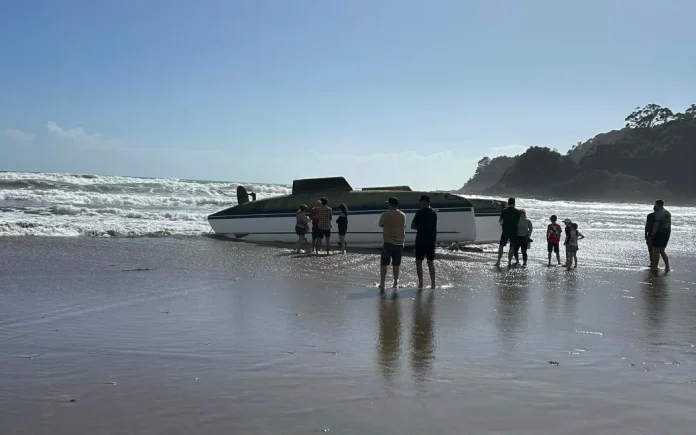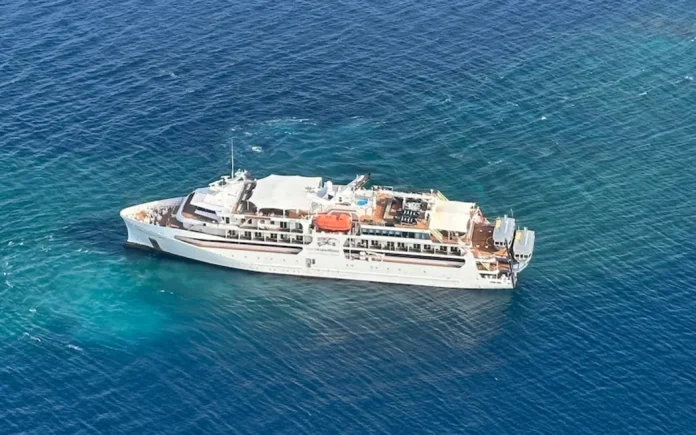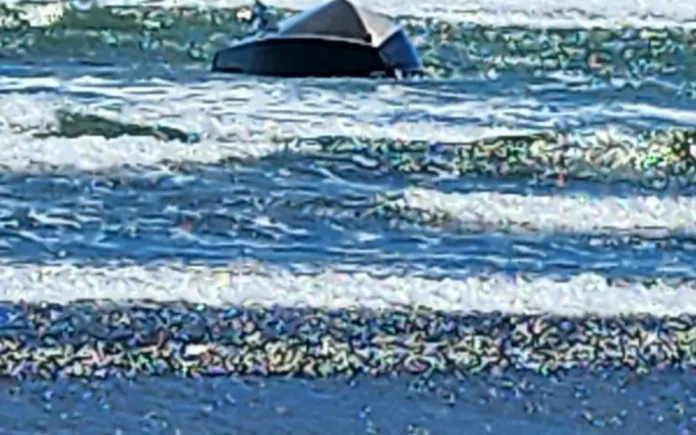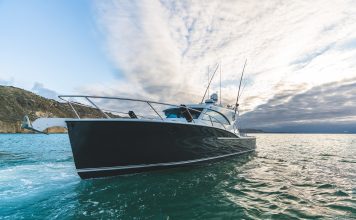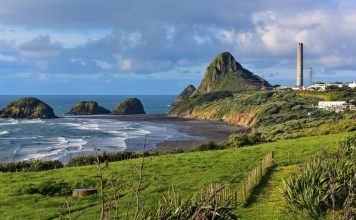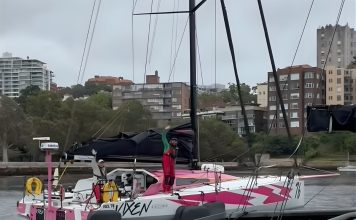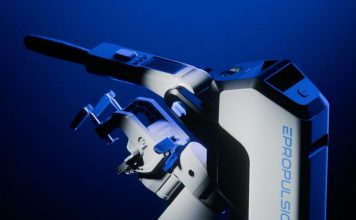Sixty-five years ago this month, the Holmglen, a sturdy 485-ton coastal freighter with only three years in service, met a mysterious and tragic end just east of Timaru. On the evening of 24 November 1959, a mayday call sent shockwaves through New Zealand’s maritime community, yet the reasons behind her sudden sinking remain elusive. This month we remember the Holmglen, her lost crew, and the legacy she left on New Zealand’s maritime history and culture.
A Modern Vessel’s Last Voyage
The Holmglen was a relatively new vessel in the Holm Company’s fleet. Built as a motored coastal freighter, she was intended to withstand the sometimes-harsh New Zealand coastal waters, making routine voyages to deliver cargo between ports. By design, she was modern, sturdy, and trustworthy — an assumption that made the events of that fateful night all the more perplexing.
On her last journey, the Holmglen was bound from Dunedin to Whanganui, with planned stops at Oamaru and Wellington. She was equipped to handle New Zealand’s coastline and was, by all accounts, performing a routine trip. But as dusk fell on 24 November, the atmosphere aboard changed. Around 9:15 pm, a mayday message from Holmglen was intercepted by the Taiaroa Head Signal and Radio Station, as well as by Wellington Radio ZLW and Awarua Radio ZLB, setting off alarm bells across the country.
The Final Distress Call
The distress call sent from Holmglen that evening would be her last known communication. Heard by Taiaroa Head and Wellington Radio Stations, Captain Regnaud’s voice, transmitted through crackling radio waves, painted a grave picture of the ship’s situation: “Am heeling heavily to port… accommodation awash… preparing to launch boat.” Acknowledgment came swiftly, yet Captain Regnaud’s tone indicated a sense of urgency. Moments later, he instructed them to “stand by for further information.” Then, silence.
Radio operator Clyde Williams later recalled the tension and gravity of those moments. “I was on 500kHz at the time and, for the first and only time, I found myself repeating an SOS call,” he said. “I was very nervous… and that was terribly difficult.” Williams and fellow operator Peter Dunn continued their attempts to establish contact, but no further word was heard from the ship.
Rescue Efforts and a Grim Discovery
The distress call initiated a coordinated rescue mission. By 9:35pm the Timaru Harbourmastr had been advised of the Holmglen’s distress. The first to respond were two New Zealand Navy survey launches, arriving shortly after midnight and beginning their search with the help of powerful searchlights. At the stage another Holm Company vessel, Holmburn, a motor vessel, arrived at the 4:15am. However, signs of the Holmglen were few. All they found was a large oil slick on the water’s surface, and, eventually, scattered debris, and three bodies. None of the 15 crew members survived, and their bodies were never fully recovered. Days later the vessel, Kara, found Holmglen’s life raft further north of Timaru a few days later.
In their search, Holmburn, located the oil slick and, using sonar, found a significant object on the seafloor, later confirmed by Royal New Zealand Navy divers to be the intact hull of Holmglen. The ship lay upright in 30 fathoms (approximately 55 metres) of water, 22 miles southeast of Timaru. With her structure appearing intact and no immediate signs of damage, questions about the cause of her sinking began to multiply.
Theories and Investigations
Despite numerous dives and investigations, no clear answer has ever been found for the Holmglen’s sudden demise. Some maritime experts suggested that a shift in the ship’s cargo could have caused her to heel dangerously to one side, leading to a swift capsize. Others speculated that water ingress could have played a role, particularly given the ship’s heavy heeling and reports of waves washing over her deck.



In 1999, a remote underwater vehicle (ROV) was deployed to examine the wreck again. The ROV found Holmglen sitting upright with no obvious damage, sparking further speculation that her end may have been a tragic combination of unfortunate factors — the shifting of deck cargo, water flooding the poop deck, or even instability issues that may have plagued the vessel from her construction. Records also noted that the Holmglen was difficult to steer and prone to rolling, characteristics which likely exacerbated her plight in rough waters. The court of inquiry into her sinking noted that had Holmglen been fitted with inflatable liferafts in addition to her two lifeboats, it’s possible that some crew members might have survived.
A Haunting Legacy and a Diver’s Fate
In the decades since her sinking, the Holmglen has drawn divers and historians alike. The site, while remote, has become a popular dive spot, attracting those curious about her tragic story and willing to venture into the waters where she rests.
However, the story took another tragic turn in 2008, when experienced diver Kevin Winston Bailey went missing while diving on the Holmglen wreck. Aged 63, Bailey had been exploring the site with two friends and was ascending from a depth of 60 metres when he disappeared during a decompression stop at 12 metres. His friends searched frantically, but Bailey was never found.
Credit for the information from maritimeradio.org
Reflection on a Mystery at Sea
Advances in technology, maybe even AI, might one day finally answer the question of how Holmglen sank, until then it will remain an enigma.












